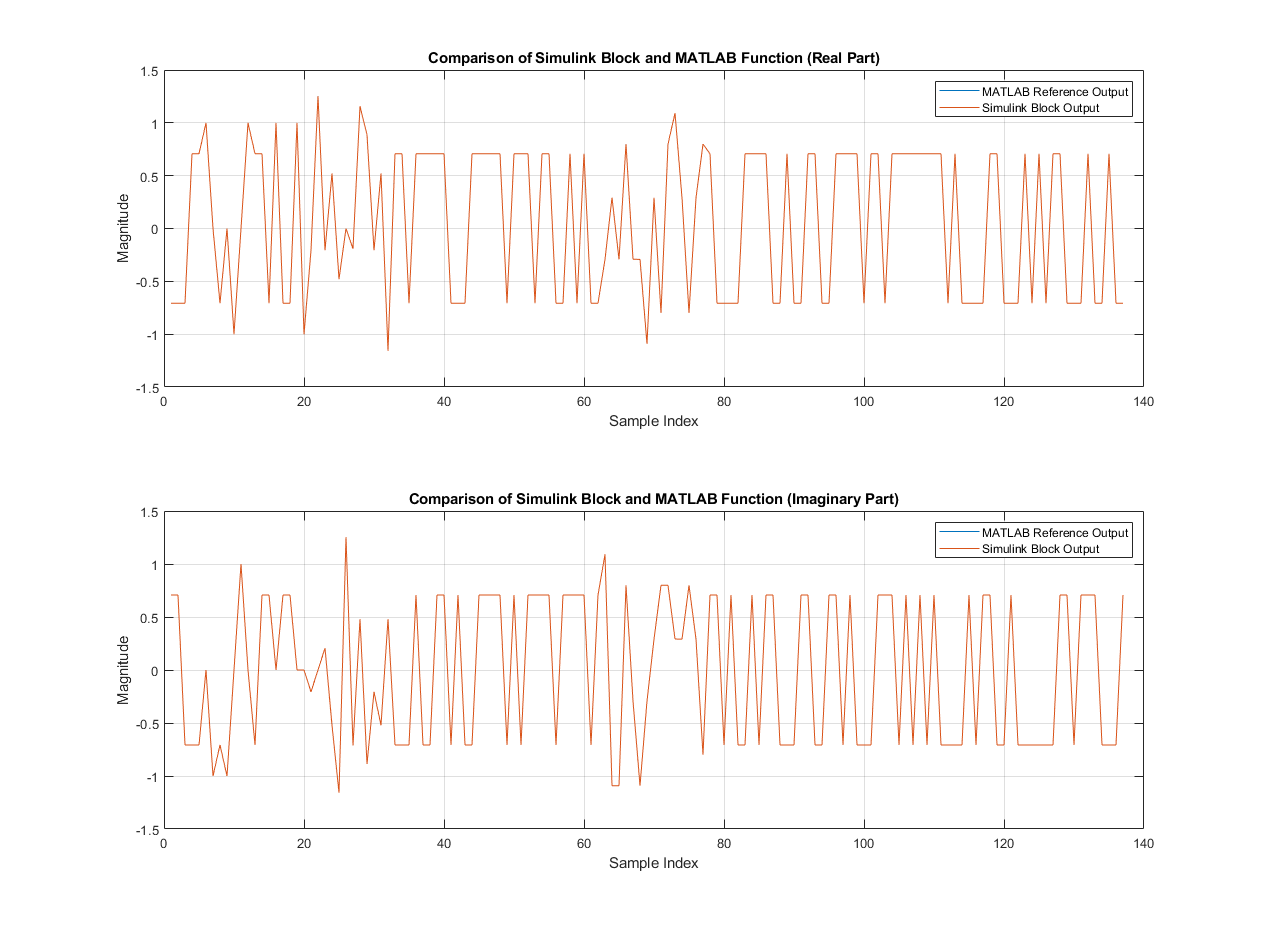DVB-S2 Symbol Modulator
Modulate data bits to complex constellation symbols according to DVB-S2 standard
Since R2022b
Libraries:
Wireless HDL Toolbox /
Modulation
Description
The DVB-S2 Symbol Modulator block modulates data bits to complex data
symbols based on the modulation types supported by the Digital Video Broadcast Satellite
Second Generation (DVB-S2) standard [1]. The block accepts data bits
and a valid signal and outputs modulated complex constellation symbols and
a valid signal.
Each complex output symbol comprises a standard number of data bits based on the modulation type, as this table shows. If you provide input data bits with a nonmultiple of the number of data bits per symbol, the block ignores the output symbol with insufficient or excess bits.
| Modulation Type | Number of Data Bits Per Symbol |
|---|---|
| π/2-BPSK | 1 |
| QPSK | 2 |
| 8-PSK | 3 |
| 16-APSK | 4 |
| 32-APSK | 5 |
The block provides an architecture suitable for HDL code generation and hardware deployment. You can use this block in the development of a DVB-S2 transmitter.
Examples
Ports
Input
Output
Parameters
Algorithms
References
[1] ETSI Standard EN 302 307 V1.4.1: Digital Video Broadcasting (DVB); Second generation framing structure, channel coding and modulation systems for Broadcasting, Interactive Services, News Gathering and other broadband satellite applications (DVB-S2), European Telecommunications Standards Institute, Valbonne, France, 2005-03.
[2] Viterbi, A.J. “An Intuitive Justification and a Simplified Implementation of the MAP Decoder for Convolutional Codes.” IEEE Journal on Selected Areas in Communications 16, no. 2 (February 1998): 260–64. https://doi.org/10.1109/49.661114.
[3] Sebesta, J. “Efficient Method for APSK Demodulation.” Selected Topics on Applied Mathematics, Circuits, Systems, and Signals (P. Pardalos, N. Mastorakis, V. Mladenov, and Z. Bojkovic, eds.). Vouliagmeni, Athens, Greece: WSEAS Press, 2009.

